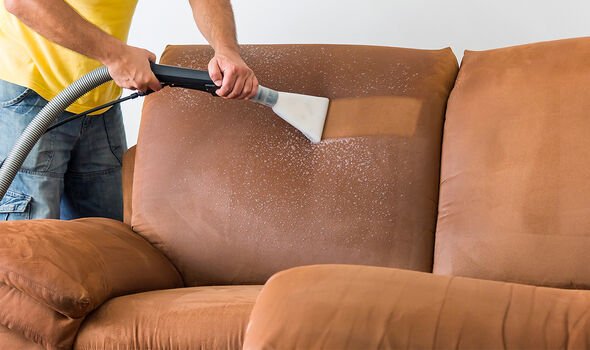Mould is a typical fungus that flourishes in damp, dark places. It generates pollutants that make respiratory conditions and eczema symptoms of allergies worse. And it may additionally lead to several disorders. Therefore, it is essential to stop the spread of mould. Check your property frequently for any broken pipes or water spills. As soon as you come upon them, wipe them down. To avoid leaks, perform routine maintenance on the piping and equipment ducts. Give your upholstery enough sunshine because it naturally eliminates mould spores. To absorb extra water in wet places, use carpets and mats. To allow the wet areas to naturally dry, you might leave the windows open. In this blog, we will get to know the some proven upholstery mould removal methods.
Why Does Upholstery Furniture Get Mould?
Things that are kept in preservation are more likely to have mould problems. Dark, moist areas are ideal for mould growth. Furthermore, materials like fabric are easily able to absorb humidity from the air. The air is thick with water vapour during the rainy season. The entire house, especially the clothes, has a damp feeling about it.
Plasterboard, wood, cardboard, and leather all absorb this moisture similarly to how fabric does. This weather’s lack of sunlight creates the ideal environment for mould growth. Mould can quickly form on a damp couch that is black and moist to the touch.
Mould can also grow in houses with inadequate air filtration and ventilation systems. Spores, which are visible and floating in the air, are how mould spreads. When these spores come upon a hospitable environment, they begin to settle. Only moisture, organic matter, and the absence of sunlight are needed for mould to thrive. Organic cloth is the best nutrition for it. Thus, a wet environment combined with darkness is ideal for the growth of mould.
5 Proven Methods For Mould Removal From Your Upholstery:
Discovering mould in your furniture is a nightmare. It can take a long time and effort to remove mould from your upholstery, particularly if you need to find out how to do it. Let’s find out the 5 Proven Methods to Remove Mould from Upholstery.
- Put your mouldy upholstery in the sun: Take it outside in the sun as soon as you notice mould on your upholstered furniture. Sunlight exposure has several advantages for moulded upholstery. First off, it stops mould spores from spreading throughout your house. Additionally, sunlight and clean air help with mould removal from upholstery. Air and natural light help to dry off the fabric’s dampness. As a result, mould has a hard time surviving. To set up your upholstery outside, pick a day with plenty of sunshine and little humidity.
- Use a vacuum cleaner: Use a brush to remove the mould from the upholstery. For larger sections of upholstery, a small brush works well. Vacuum thoroughly once the visible mouldy patches have been removed. Utilising your vacuum’s upholstery attachment, thoroughly clean the cloth. Throw away the Hoover bag that was used to clean the musty upholstery. If your vacuum is bagless, you should use vinegar and alcohol or an anti-mould cleanser to clean the vacuum container. Before reuse, allow complete drying.
- Use white vinegar: White vinegar is excellent for cleaning upholstery as well as soft furniture. Spray the mouldy area with white vinegar after adding it to a spray bottle. Use a gentle spray and avoid spraying excessively. Next, clean it off with a soft cloth.
- Use alcohol solution: Use rubbing alcohol to stop mould and mildew from returning to the fabric in the future. Open windows to improve ventilation or let the upholstery dry in the sun. To hasten the drying process, use a dehumidifier. Rubbing alcohol tends to discolour various materials, thus caution should be used. Apply the alcohol-rubbing alcohol solution to a small patch first to see if it affects the colour; if not, use it on the entire afflicted region.
- Get Professional help: If you are tired of DIY solutions for upholstery cleaning, you can take expert help from upholstery cleaning. To fight mould issues, mould experts utilize potent antimicrobial agents. They often apply a sealer after eliminating the mould to make the treated areas resistant to moisture damage, condensation, and mould growth.
Conclusion:
In this blog, we have discussed the 5 Proven Methods to Remove Mould from Upholstery.Moreover,the important thing is to keep the house dry inside. It’s because there are already mould spores in the air. All they require for growth is some wetness. Since moisture is always present after a water damage event, the likelihood of mould growth is very high. Mould may grow on the carpet or upholstery if it is exposed to water for an extended period. And only a mould removal company can manage such a large-scale mould growth.




